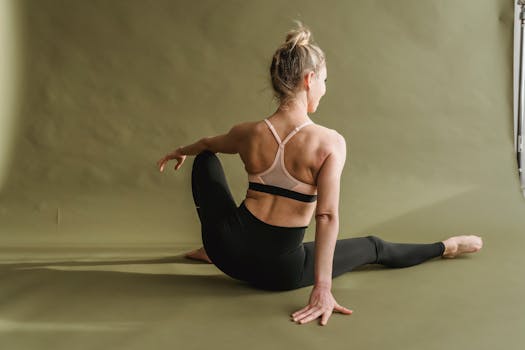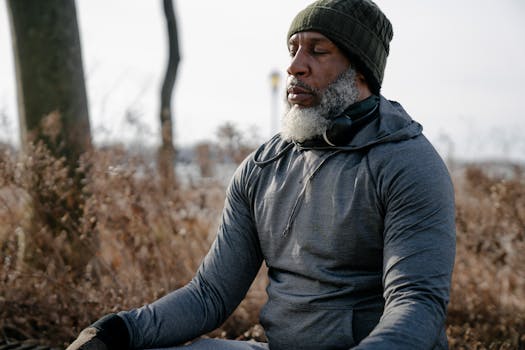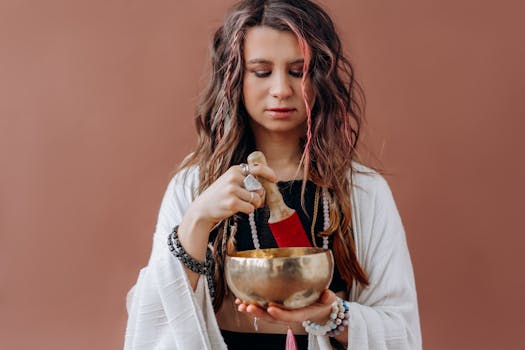Yoga for Stress Relief: Poses to Calm the Mind and Body
Takeaways: Yoga is an effective practice for stress relief, featuring poses that promote relaxation and mindfulness. Incorporating these poses into your routine can significantly reduce stress, improve mental clarity, and enhance overall well-being.
In today’s fast-paced world, stress has become an unwelcome companion for many people. It can affect our physical and mental health, making it essential to find effective ways to manage it. Yoga is a holistic practice that not only strengthens the body but also calms the mind, making it an excellent tool for stress relief. In this article, we will explore several yoga poses that can help you relax and unwind.
Understanding the Benefits of Yoga for Stress Relief

- Improved Flexibility: Regular practice of yoga can enhance your body’s flexibility, helping to relieve tension.
- Enhanced Mindfulness: Yoga encourages mindfulness, allowing you to focus on the present moment and reduce anxiety.
- Better Sleep: Engaging in relaxing yoga poses can improve sleep quality, which is often disrupted by stress.
- Reduced Muscle Tension: Many yoga poses target specific muscle groups, alleviating physical manifestations of stress.
- Emotional Balance: The meditative aspects of yoga can help regulate emotions and promote a sense of calm.
Incorporating yoga into your daily routine can transform your approach to stress management. Here are some effective poses to consider:
Calming Yoga Poses for Stress Relief
1. Child’s Pose (Balasana)
Child’s Pose is a gentle resting pose that helps to calm the mind and relieve tension in the body. To practice this pose:
- Begin on your hands and knees, with your wrists aligned under your shoulders and your knees under your hips.
- Exhale as you sit back on your heels, stretching your arms forward and resting your forehead on the mat.
- Hold this position for several breaths, allowing your body to relax and your mind to quiet.
2. Cat-Cow Stretch (Marjaryasana-Bitilasana)
This dynamic pose helps to release tension in the spine and promote relaxation. Here’s how to do it:
- Start on all fours in a tabletop position, with your knees under your hips and your hands under your shoulders.
- Inhale as you arch your back (cow pose), and exhale as you round your spine (cat pose).
- Continue flowing between these two positions for several rounds of breath.
3. Legs-Up-The-Wall Pose (Viparita Karani)
This restorative pose promotes relaxation and aids in reducing anxiety. To perform it:
- Lie on your back with your legs extended up against a wall, keeping your hips close to the wall.
- Place your arms at your sides, palms facing up, and close your eyes.
- Stay in this position for 5-15 minutes, focusing on your breath and allowing your body to relax.
4. Corpse Pose (Savasana)
Often practiced at the end of a yoga session, Savasana is crucial for integrating the benefits of your practice. Follow these steps:
- Lie flat on your back with your legs slightly apart and arms resting at your sides, palms facing up.
- Close your eyes and take deep, calming breaths, letting go of any tension.
- Stay in this pose for 5-10 minutes, focusing on your breathing and releasing any remaining stress.
5. Forward Bend (Uttanasana)
This pose helps to release tension in your neck and shoulders while promoting relaxation. Here’s how to do it:
- Stand tall with your feet hip-width apart.
- As you exhale, bend forward at the hips, letting your head hang and your arms dangle.
- Hold for several breaths, feeling the stretch in your hamstrings and the release in your upper body.
Creating a Yoga Practice for Stress Relief

- Set Aside Time: Dedicate a specific time each day for your yoga practice, even if it’s just 15-20 minutes.
- Create a Calm Space: Find a quiet and comfortable space where you can practice without distractions.
- Listen to Your Body: Pay attention to how your body feels during each pose and adjust as needed.
- Incorporate Breathwork: Focus on your breath throughout your practice to enhance relaxation.
Remember, the key to effective stress relief through yoga is consistency. Over time, you will likely notice improvements in your overall well-being, as well as enhanced resilience to stress.
Conclusion
Yoga is a powerful tool for managing stress and promoting relaxation. By incorporating calming poses into your daily routine, you can cultivate a sense of peace and clarity in your life. Whether you are a seasoned yogi or a beginner, these poses can help you reconnect with your body and mind, ultimately leading to a more balanced and fulfilling life. For more insights on yoga and wellness, check out resources like Yoga Journal, DoYouYoga, and Yoga Basics for guides and tips to enhance your practice.


